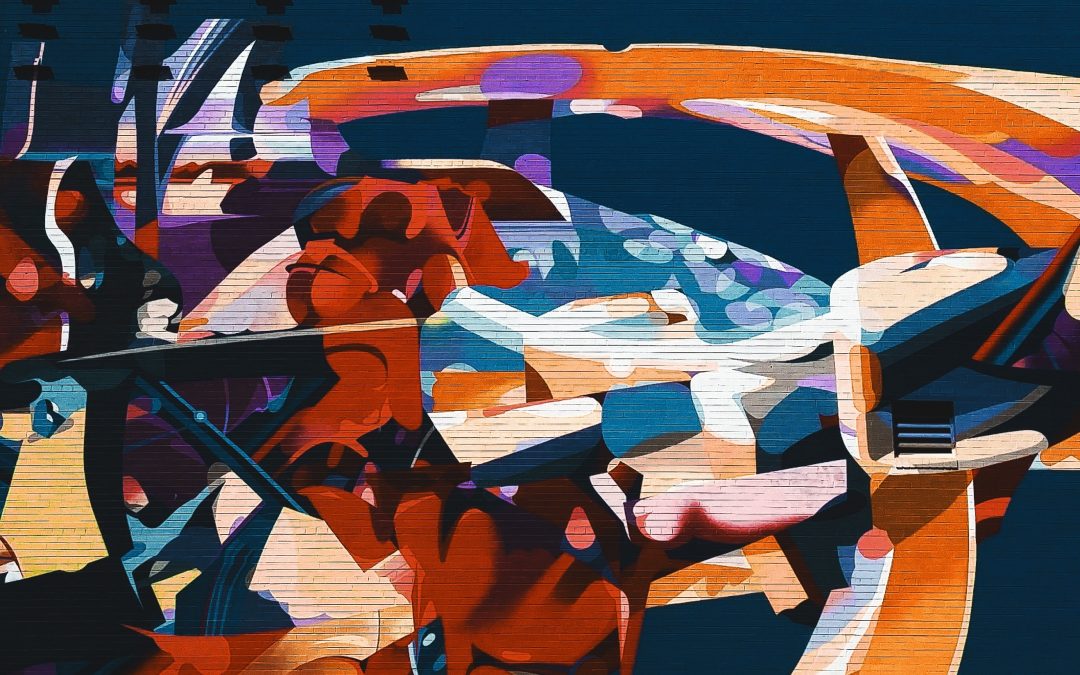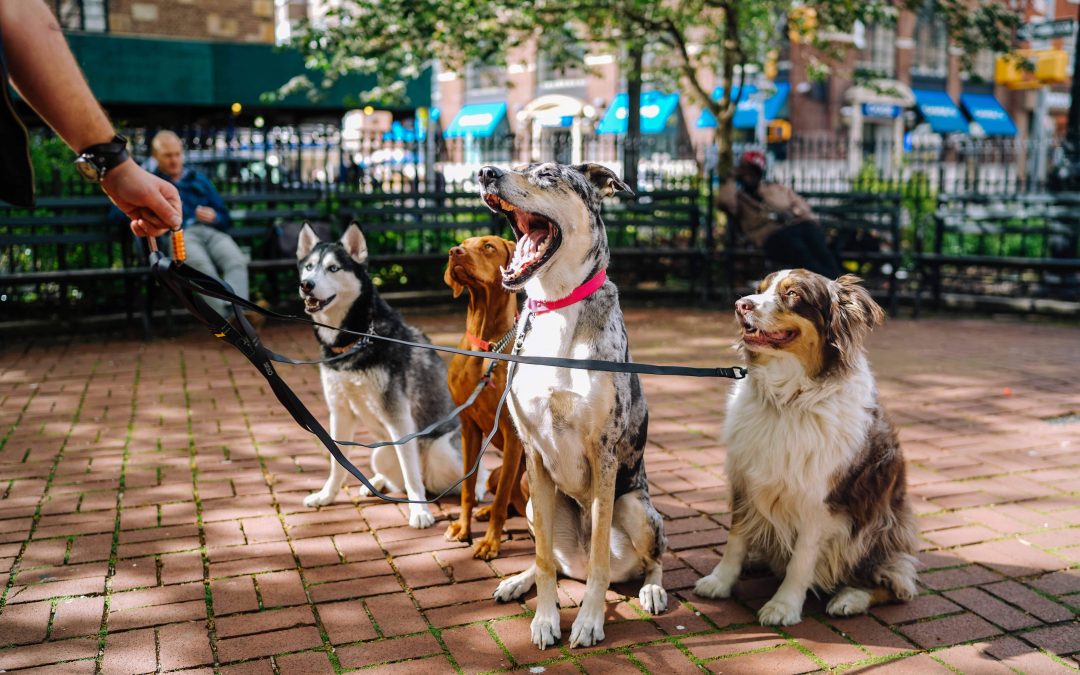
by BCB Property Management | Aug 7, 2017 | New York City
Her acclaimed mergings of expressive form and robust functionality grace the world from Zaragoza to Guangzhou. Across a nearly 40-year career, Zaha Hadid established herself as a premier creator of architectural elegance before her untimely passing in 2016. Her legacy, however, will live on in New York City in the newly finished 520 West 28th Street in Chelsea. Overlooking the High Line, this building merges timeless views and state of the art amenities to stand tall in the city’s high rise luxury scene.
Hadid’s elegant creation counts among its neighbors not only the repurposed elevated rail line, but cutting edge Hudson Yards development, the perpetually trendy Meatpacking District, and the Whitney Museum. But as usual for Hadid, the most intriguing aspect is what’s inside. No luxury was too extravagant for this apartment building, which boasts amenities such as NYC’s only private 3D IMAX theater, a skylit 75-foot swimming pool, and a fully automated parking garage.
The luxury building is limited to 38 exclusive units, with rooms designed by Hadid that evoke the sleek minimalism of the surrounding area’s cutting edge art galleries. Not to be outdone by those neighbors, the building’s ground floor will host it’s own 5,000 square foot gallery. Complementing the “High Line Nine” galleries being completed this year, 520’s gallery will host the latest branch of the acclaimed Paul Kasmin Gallery, one of New York’s finest purveyors of visual
Though she is sadly unable to see it in person, Zaha Hadid’s first and only large-scale New York City project will serve as an enduring capstone to an untouchable architectural legacy. This masterwork of residential splendor will be the last of a long line of forward-thinking achievements. In a metropolis filled with rich experiences, 520 West 28th Street’s stunning facade and luxe interiors confirms the best of the city is only just arriving.

by BCB Property Management | Jul 25, 2017 | Neighborhoods, New York City, Real Estate
The Harlem neighborhood is an emblematic part of Manhattan, but few know its beginning as Dutch farmland and later as a key point for George Washington during the American Revolution. Now, it’s a hot neighborhood for its restaurants, cultural heritage, and central location. Knowing Harlem’s history, and its many phases of change, is essential to understanding why it is now one of the newly hot places to live in New York City.
Harlem is a large area of Uptown, from the East River to the Hudson River, and from the bottom of Washington Heights at 155th Street down to around 96th Street. It is commonly divided into Central Harlem, West Harlem, and East Harlem (often called Spanish Harlem).
Harlem was formally incorporated in 1660 as New Haarlem, named after the Dutch city of Haarlem. The Dutch settlers recognized the flat lands would be good for farming, in part because they saw Manhattans and other Native American tribes farming there. Later, the Dutch tried to change the name to Lancaster, luckily without success!
During the American Revolution, George Washington established a base in Harlem to fight off the British troops. He successfully pushed them back, marking his first American victory. To retaliate, the British burnt Harlem down, starting the first in a series of rebuilding and rebirths for the area.
By the 1820s, Harlem had only a few families and was difficult to reach from other areas of the city. Prominent American figures held large areas of land, including Alexander Hamilton and the Roosevelt family (several generations before President Roosevelt would be born). Harlem was considered the countryside, and the land was mostly used for farms.
It wasn’t until the mid-1800s that real development began. In 1832, the arrival of the New York and Harlem Railroad (now Metro North) changed everything. It was the first street railway in the world and one of the first railroads in the United States. At first, it used horses, then steam engines, and finally electricity. With reliable transportation in place, Harlem was finally a viable place for development. Many cultural centers were established over the years, including the City College of New York in 1907. The easy access to transportation is one of the reasons Harlem is popular right now.
Harlem has seen a diverse flow of residents, most notably black, Jewish, Italian, Puerto Rican and Latin American populations who were pushed out of other areas of the city. In the early 20th century a large population of black residents fleeing the Jim Crow laws of the South established homes in Harlem. Prohibition, The Harlem Renaissance, housing policies elsewhere in the city and the Harlem Riot all had an impact on the area, but it has come back each time.
Because so many of the multi-ethnic influences are preserved, Harlem is now experiencing an economic renaissance as people move into the area to experience the arts and culture. Historic buildings and sites to visit include the home of author Langston Hughes (20 East 127th Street), the home of Alexander Hamilton Grange (West 141st Street and St Nicholas Avenue), and the many historic churches and theaters such as the Apollo Theater (253 West 125th Street). There are also many popular restaurants and bars which draw crowds.
For people looking for their next home, the architecture is a major draw for Harlem, especially in areas such as Mount Morris Historic District where historic townhouses sit along tree-lined streets. Also popular are beautiful brownstone apartment buildings, many of which are in the process of being modernized on the inside. New residents of Harlem have the benefit of experiencing the history of New York City, with all its diversity, while also participating in the growth and yet another rejuvenation of the area.

by BCB Property Management | Jul 25, 2017 | Brooklyn, Neighborhoods, New York City
New York City’s Shakespeare in the Park is an annual (and massively popular) event at Central Park’s Public Theater, where two of Shakespeare’s classics are performed every summer. This year, the event made waves when the title character of Julius Caesar was portrayed in the likeness of President Trump, causing protests and the withdrawal of several corporate sponsors. Nonetheless, the event retained its notoriety, with tickets as difficult to come by as ever.
Julius Caesar closed on June 18, but A Midsummer’s Night Dream is hot on its tails. The second show premiered on July 11 and will run through August 13, but only the most determined will snag a seat. Luckily, New York City is a theater juggernaut. Those that know where to look will find dozens of other free, outdoor performances to fill the Shakespeare-shaped hole in their parks.
Theater at Bryant Park
On Thursdays around lunchtime, Bryant Park in Midtown Manhattan previews Broadway shows by bringing casts on stage to perform signature numbers. But if you’re in the mood for more than a sneak peek, Bryant Park also hosts complete performances during the summer, including Twelfth Night (July 28 to July 30) and The Tempest (August 25 to September 9).
Theater at Riverside Park
At the Upper West Side’s Riverside Park, The Hudson Warehouse reprises their 2013 production of the swashbuckling classic The The Three Musketeers through July 23. Starting July 27, they will perform Henry V, a dramatic Shakespearean gem.
Shakespeare in the Parking Lot
Why watch Shakespeare in the park when you can watch it in a parking lot in the Lower East Side? In the lot behind the Clemente Soto Velez Cultural and Educational Center, Shakespeare’s comedic All’s Well That Ends Well will run through July 22. Starting on July 27, Henry VI Part 3 will pick up and run through August 12.
Macbeth in South Brooklyn and Brooklyn Bridge Park
Want to watch one of Shakespeare’s greatest tragedies, if not the greatest? Luckily, you have options. Macbeth will be performed by South Brooklyn Shakespeare from July 15 to August 5 at their outdoor venue in South Slope. At Battery Park in the Financial District, another rendition will begin on July 21 before moving to Brooklyn Bridge Park in its last week and concluding on August 7.
Hip to Hip Theater, All Around Town
Lastly, if you’d rather the show come to you, Hip to Hip Theater never performs in the same location twice. Henry VI Part 1 will tour through 12 different parks spanning every borough, plus some of New Jersey, from June 25 to August 20. Hip to Hip will also tour Shakespeare’s lesser known (and rather creepy) play Measure by Measure from July 26 to August 18.
For the savvy theater nerd, there’s clearly no shortage of free shows this summer. Happy viewing!

by BCB Property Management | Jul 25, 2017 | Brooklyn, Neighborhoods, New York City
New York City is an amazing place for art, artists and art lovers. Not just because of the amazing museums, but also because of the art that’s available every time someone walks out their front door.
So, where to find the best public art in New York City? The answer, everywhere! But, more specifically…
Start with the subway
From whimsical, curious political statues to tile mosaics that can be charming, informative (the actual name of the station!) or both, the subway is an underground gold mine of art.
Two of the best? First, get to the 14th St./Eighth Ave. station (the intersection of the A,C,E, and L lines) for Life Underground by artist Tom Otterness.
The permanent installation features a small bronze alligator eating a well-heeled, corrupt, politician. A woman reading a book sits on a similarly rich businessman.
The statuary is based, in part, on the work of 19th-century political cartoonist Thomas Nast. Otterness told the New York Daily News, in 2016, “I thought not that much has changed in 100 years.”
On the lighter side is the Subway Art Safari, a series of tile mosaics (along the N, Q and R train routes) depicting fun animal families.
Flocks of parrots fly over stairs at the Fifth Avenue and 59th Street stop. Penguins can be found by the exit stairs, also at 59th Street (Central Park South) and Fifth Avenue, as can a troop of monkeys. Not coincidentally, the Central Park Zoo is only a few blocks away from these entertaining images.
Above ground, there’s both a permanent and ever-changing landscape of art to explore.
Fearless Girl, by artist Kristen Visbal was unveiled in the Financial District in March, to both praise and skepticism. It put a distinct new spin on the art in that corner of New York (Broadway and Morris) because of the exact location—facing down the iconic Charging Bull statue. Fearless Girl is currently scheduled to stay in place only through 2018.
New Yorkers being who they are, someone recently put a Wonder Woman diadem on the statue, further reinforcing the strength of the piece.
Speaking of strength and iconic images, south of the Financial District at the tip of Manhattan is Battery Park. A trip there earns art lovers a view of perhaps the most iconic of all New York art, The Statue of Liberty.
Dedicated in 1886 and renovated in 2000, the statue is unique (to say the least) for both its meaning, and its colossal size.
Most recently, four Paparazzi Dogs have appeared in Greenwich Village. The work of Gillie and Marc, who are a husband and wife team, the demands-a-selfie art is on the traffic island at of Sixth Avenue, Greenwich Avenue, and Christopher Street.
There is no end date set for the display.
For further proof that New Yorkers love art, head to the upper west side to see an original Banksys, lovingly preserved by the Zabar family.
That’s right, the founders of the family-owned for three generations market, Zabar’s, preserved a Banksy by putting plexiglass over it several years ago.
The piece, a boy taking a carnival-style hammer to a fire standpipe, is at 79th and Broadway. Incidentally (or not) that’s also the location of the market, which means there’s great food and drink options available to refuel for more public art touring.
Finally, keep an eye out for random acts of art.
Being New York, in addition to temporary and permanent installations, there’s also straight-up street art.
The blog worleygig.com features all things New York, but has a “street-art” tag that highlights the near-graffiti, colorful, often political, art that pops up on walls, posts and construction sites around the city.
A recent post points out face relief sculptures by French street artist Gregos that adorn the facades of buildings and other random objects all along 14th Street.
Worley also keeps an eye on art that could easily fall prey to graffiti, refurbishment, or the elements. According to the blog, Nick Walker’s mural of his signature Love Vandal character in a parking lot at the southwest corner of 17th Street and 6th Avenue, painted in the fall of 2014, “still looks great!”
In short, there’s art around every corner in New York City, and you don’t need to pay for museum entry to see it. One might say the city in itself is a gallery, and given the scale of art it holds, we’re inclined to agree.

by BCB Property Management | Jul 25, 2017 | Brooklyn, Neighborhoods, New York City
The dog owners of New York City have spoken and, once again, it is their opinion that Bella and Max are best names for their beloved pets.
This is, according to The New York Post, the second year in a row that Bella (“beautiful in Italian) and Max (often, in humans, short for “Maximilian” meaning “greatest”) top the list of popular canine names.
The Post gets its data from the Health Department’s dog license records each year. New York state law requires dog owners to license their dogs, and the city requires the tags be attached to the dog’s collar.
In 2016, according to the records, there were 1,358 Bellas and 1,268 Maxes. The 868 Charlies, 872 Lolas and 867 Rockys completed the top-five-names list.
In all, there were 87,031 dogs registered in 2016.
Of course, this being New York, every borough and neighborhood has its own idea about what pup names are best.
Once again, the Health Department is there to help with a map that shows the most popular name, based on neighborhood.
In the Upper West Side, Hudson and Theodore seem to be the thing. But just across Central Park Tiny and Nellie are the “It List” monikers.
Head for Harlem and the dog owners seem to want their pets to toughen up with names like Rocky and Boomer.
What’s even more fascinating is taking a look at popular breeds of dogs, and giving them the popular name.
According to the American Kennel Club, the French bulldog, described in this article as “adorable and squishy” has been the most popular breed in the city for three years.
Labrador retrievers were the second most popular, and was particularly beloved on the Upper West Side.
So, apparently, to be trendy, the best idea would be to adopt a French bulldog and name it Max, or Bella. Unless it’s an Upper West Side pooch, in which case a Lab named Hudson would be the way to go.
Or, like a truly independent New Yorker, folks could get a mutt at the shelter, name it Fluffy (which ranked 93rd overall in the city) and live in whichever neighborhood they chose, proudly walking their pet, daily, on the sidewalks they call home.





